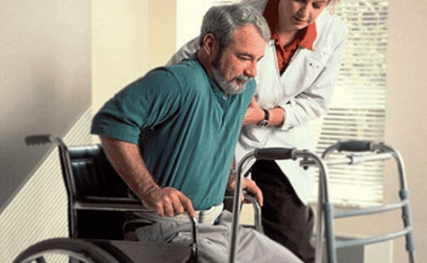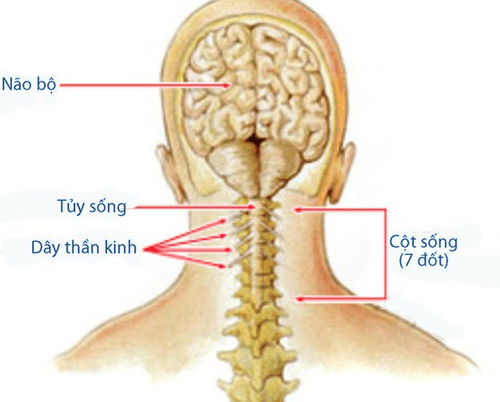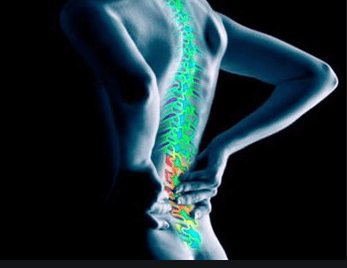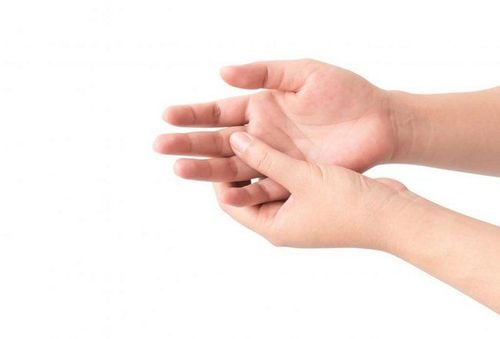This is an automatically translated article.
The article is professionally consulted by Master, Doctor Bui Tien Dat - Emergency Medicine - Cardiology - Emergency Resuscitation Department - Vinmec Hai Phong International General Hospital. The doctor has more than 12 years of experience in the field of emergency resuscitation - cardiology.Paralysis is a loss of function and control of one or a group of muscles in the body. Paralysis can be temporary or permanent in part or all of the body. Paralysis affects the quality of life of patients, so it is necessary to have a certain understanding of this issue.
1. Common types of paralysis
Paralysis (motor paralysis) is a loss of function of one or more muscles in the body that is mainly caused by damage to the brain. Paralysis can appear temporarily or permanently, affecting many body activities such as blood circulation, breathing, speech, chewing, sex and control of urination, etc., depending on the location and level. paralysis degree.Types of paralysis can be classified into 4 types as follows:
Paralysis of a limb: A paralysis that occurs only in a single part of the body, usually an arm or leg. Paralysis of a limb can be temporary or permanent. The main cause of paralysis of a limb is usually cerebral palsy when a nerve is damaged or compressed excessively in a specific location. Monoplegia can also occur after stroke, cancer, and a number of other diseases. In some cases, the paralysis will subside as the patient's body gradually recovers. Hemiplegia: This type of paralysis is also known as hemiparesis. This is a form of paralysis that affects the muscles on one side of the body. Hemiplegia is often caused by brain injuries such as traumatic brain injury, ischemia on one side of the brain or congenital diseases such as cerebral palsy... or spinal cord injuries. Treatment of hemiplegia is often based on the cause of the paralysis, the methods can be applied very diversely from physical therapy to surgery.

Another classification is based on the degree of paralysis, including:
Complete paralysis Total: A complete loss of control of the paralyzed muscles. The patient will almost not feel the existence of those muscles. Partial or incomplete paralysis: The patient still has sensation and can control movement of the paralyzed muscles.

2. Things to know about paralysis
There are many causes of paralysis, but the most common is stroke. Damaged brain cells after a stroke can affect the muscles, leading to partial paralysis or even paralysis of one side of the body. Paralysis after a complete stroke can be improved with reasonable rehabilitation methods to help the paralyzed muscles gradually regain normal functionIn addition, paralysis can also occur due to some specific diseases such as :
Demyelinating disease: Myelin is the protective covering of nerve cells, when this sheath is damaged, nerve cells will have difficulty sending and receiving signals, leading to weakening of the neurons. muscles and eventually paralysis. There are many diseases associated with myelin deficiency, the most common of which is multiple sclerosis. Motor Neuropathy: Motor neurons control the action of muscles. They include two types: upper motor neurons, responsible for sending signals from the brain to the spinal cord, and lower motor neurons, responsible for receiving signals from the spinal cord and sending them to the muscles for control. body activity. A number of diseases can cause these cells to lose or reduce their capacity such as: + Upper motor neuron diseases such as primary scleroderma affecting the upper motor neurons causing muscle spasticity , eventually leading to paralysis.
+ Lower motor neuron diseases such as spinal muscular atrophy affect the lower motor neurons causing the muscles to become soft and weak, sometimes uncontrollable convulsions occur.

Cyclical paralysis: Occurs when there are genetic changes. Patients will experience paralysis when exposed to certain substances in food. Sleep paralysis: Sleep paralysis occurs when the body is in the transition between waking and sleeping. You will feel unable to move any part even though your body is awake. This phenomenon is common in people with physical weakness, prolonged fatigue, insufficient sleep or excessive anxiety. Some viruses can cause facial nerve paralysis, causing one side of the face to sag. This is considered mild paralysis and usually subsides within weeks or months. Tick paralysis: Some ticks contain neurotoxins in their salivary glands that can cause paralysis if bitten by them. The paralysis disappears as the toxin is eliminated. Ticks sometimes carry Lyme disease, a bacterial infection that can cause paralysis of the face or hands or feet. Muscular Dystrophy: A genetic mutation that affects the synthesis of certain proteins needed in the formation of muscles. Over time, the muscles will weaken and eventually become paralyzed.

Paralysis after a cerebrovascular accident can be improved by rehabilitation exercises, provided that the patient has to work hard and persevere to achieve the maximum effect.
Vinmec International General Hospital is a hospital with the function of examination, treatment, prevention and recovery of many diseases, including stroke, paralysis,... At Vinmec, there are full medical equipment needed. It is necessary to carry out treatment methods from simple to complex such as medical treatment, intervention, prevention, rehabilitation after stroke,...
With a team of highly qualified medical professionals, has undergone training and has been granted technical certificates, can handle quickly and effectively, especially in cases of urgent emergency. Therefore, patients with cerebral vascular accident or other causes can rest assured with a strict, methodical and effective treatment process at Vinmec.
Please dial HOTLINE for more information or register for an appointment HERE. Download MyVinmec app to make appointments faster and to manage your bookings easily.
Reference sources: webmd.com, sciprogress.com













